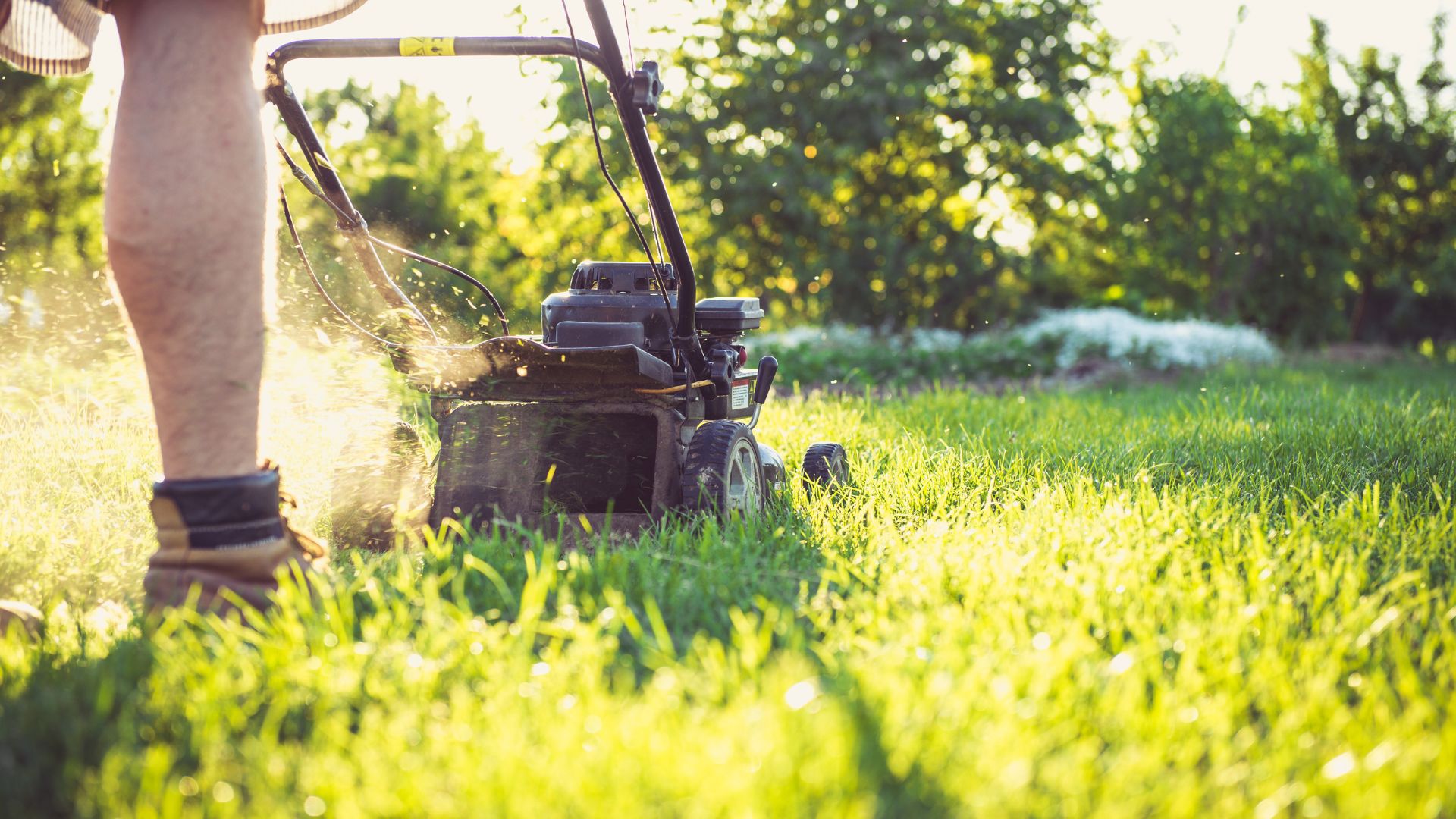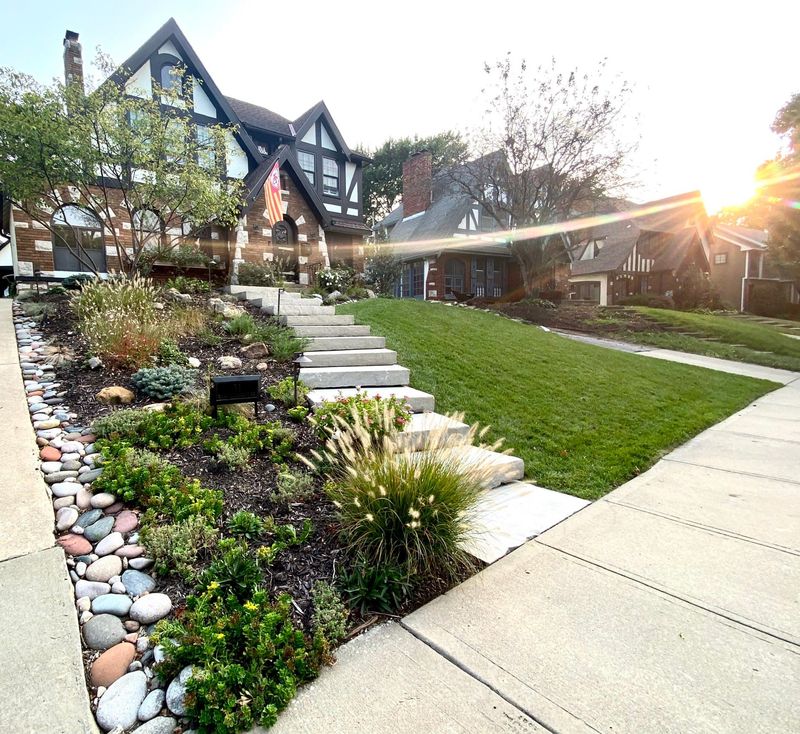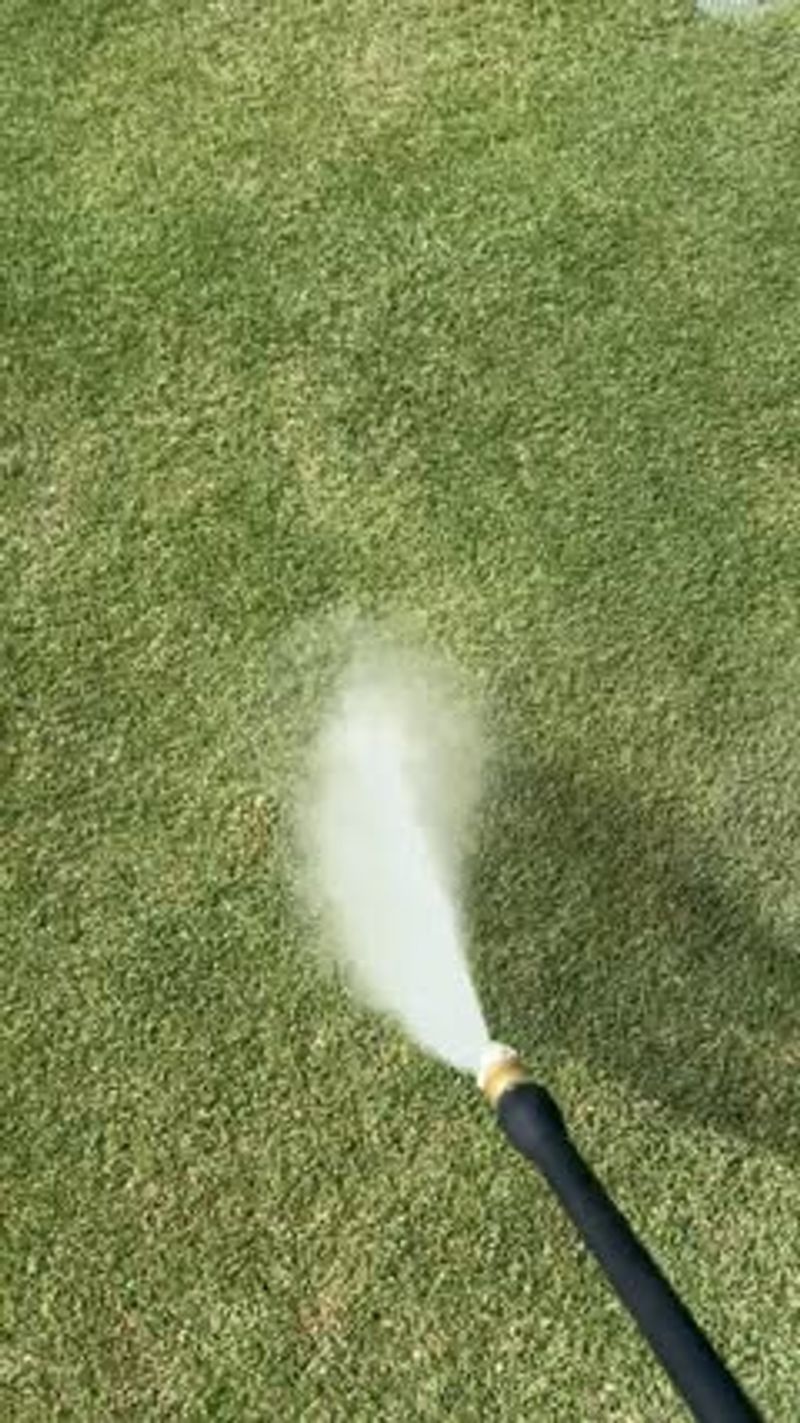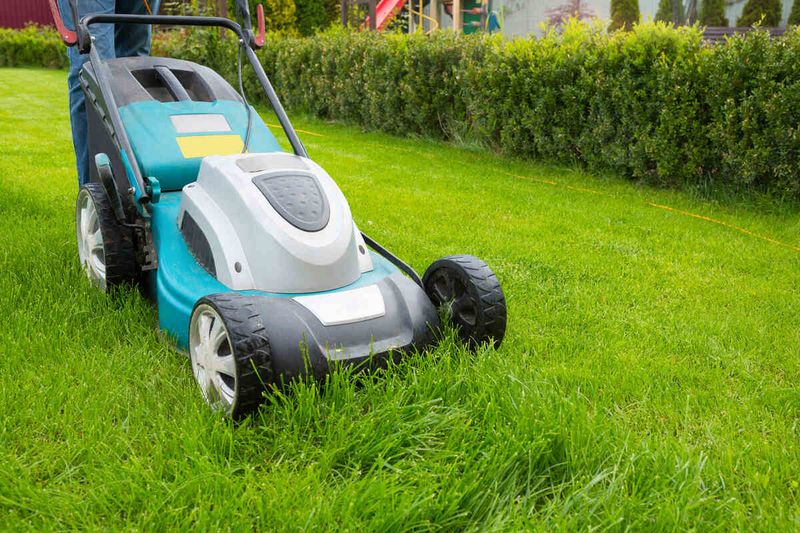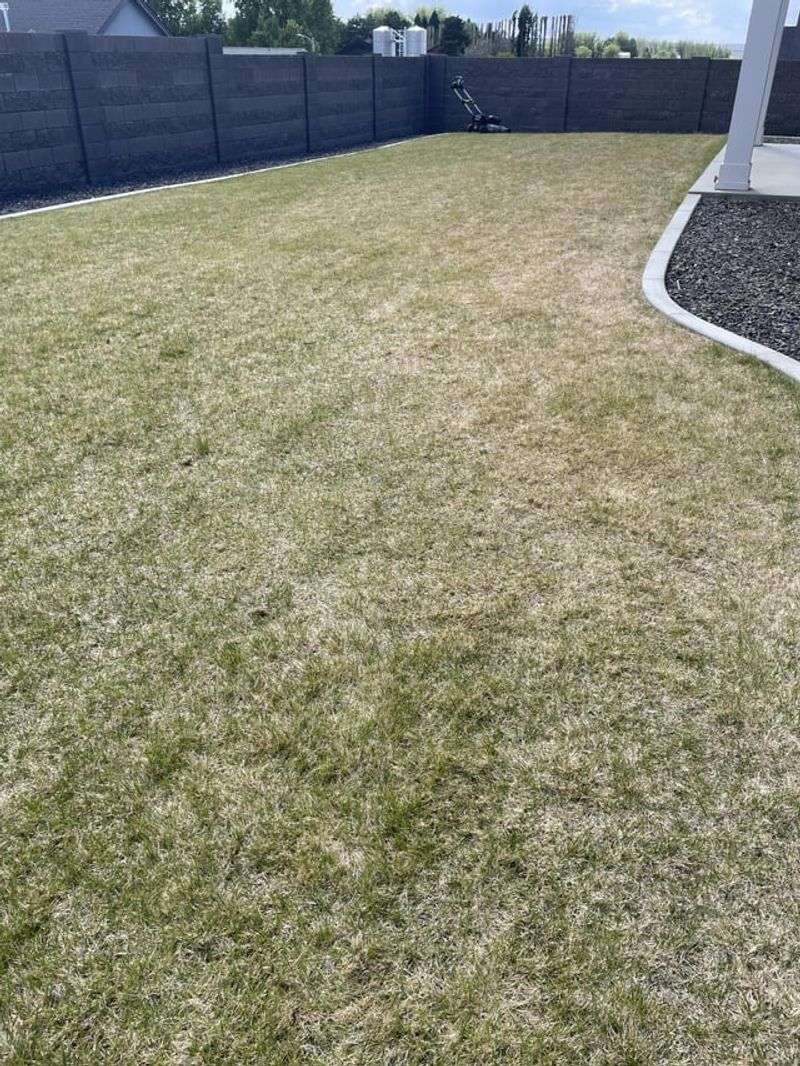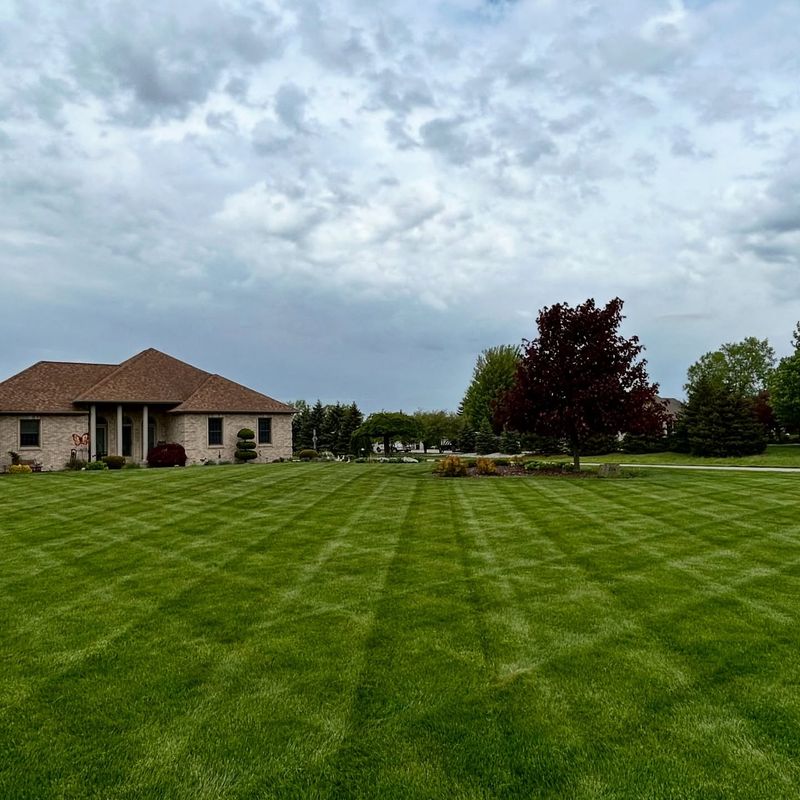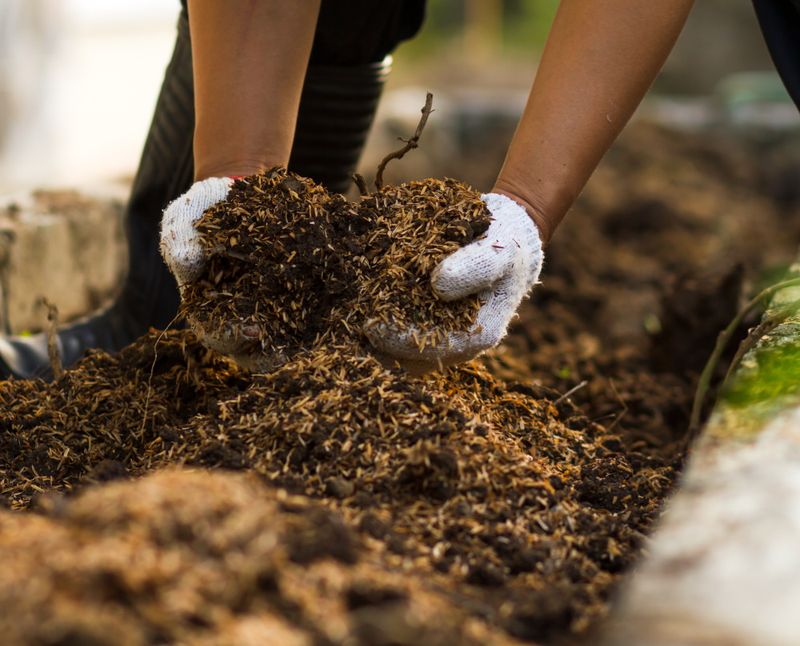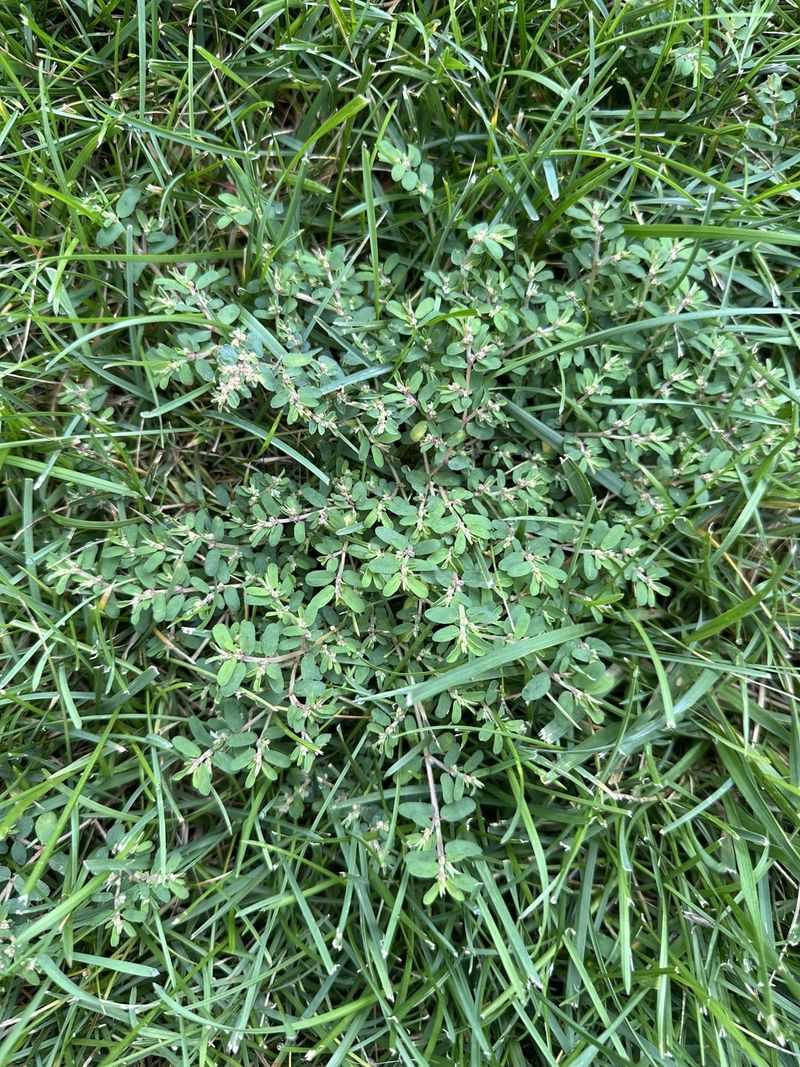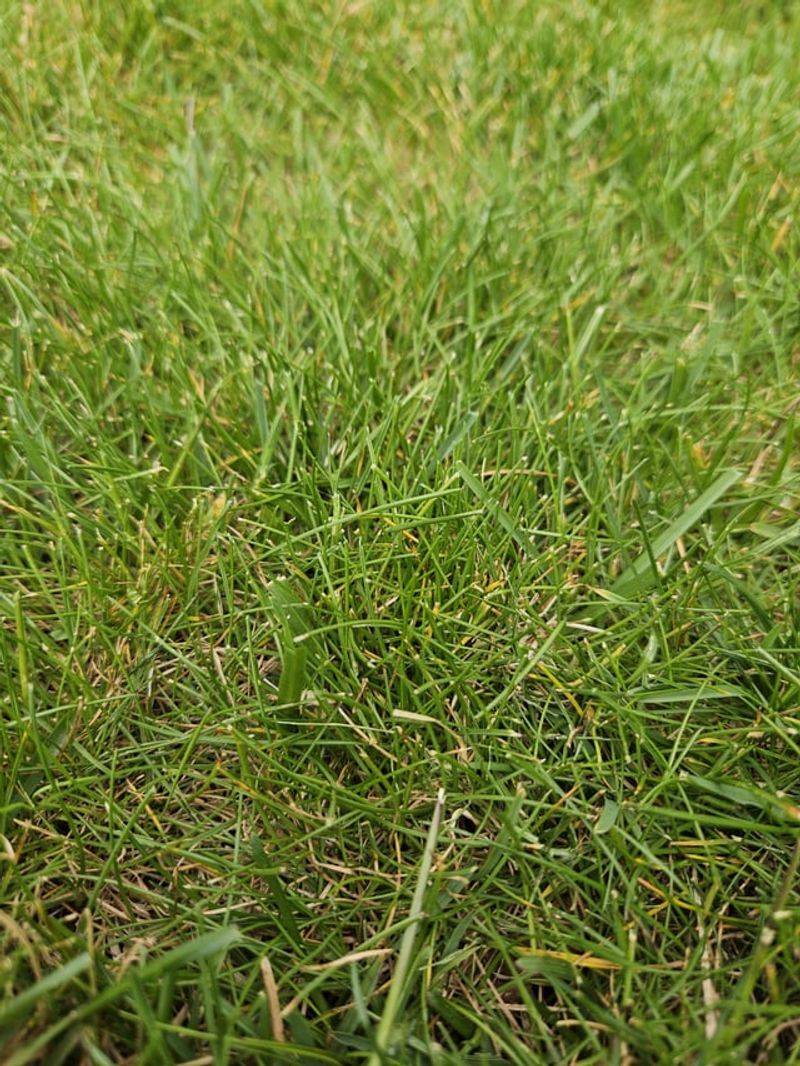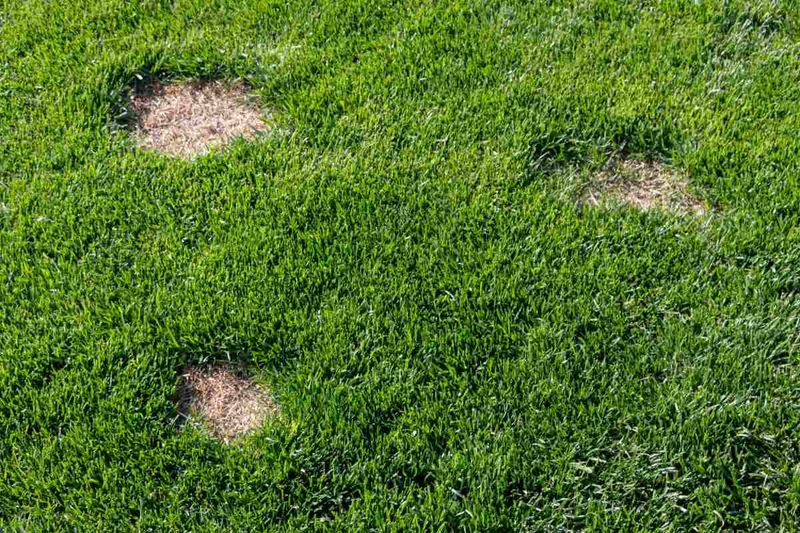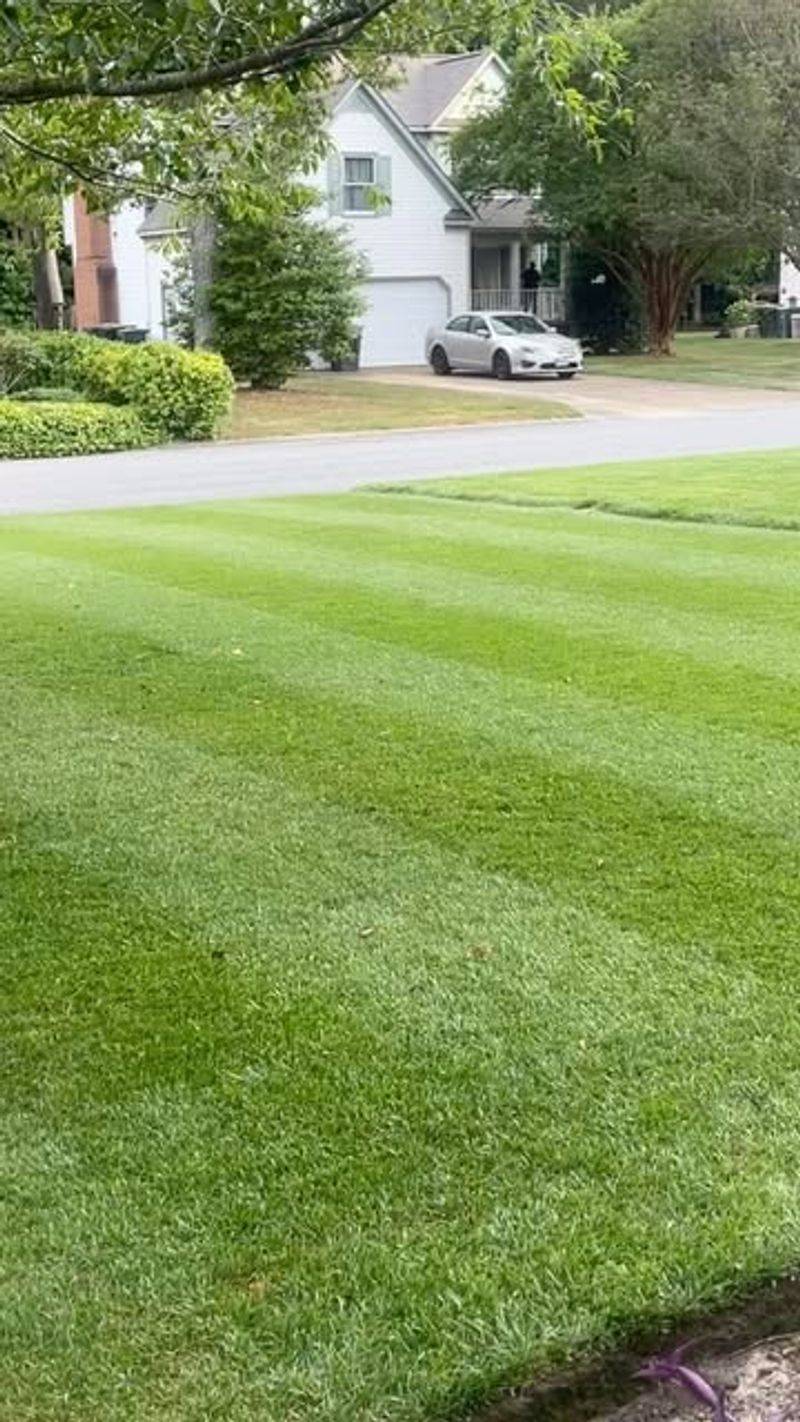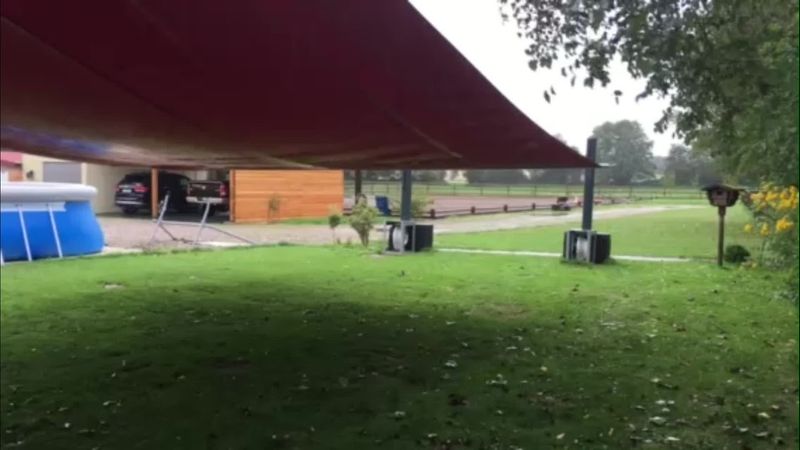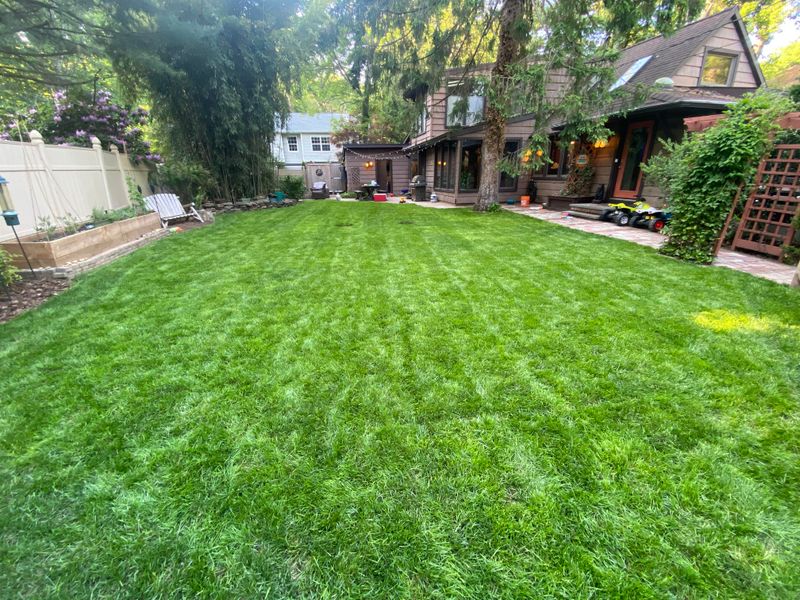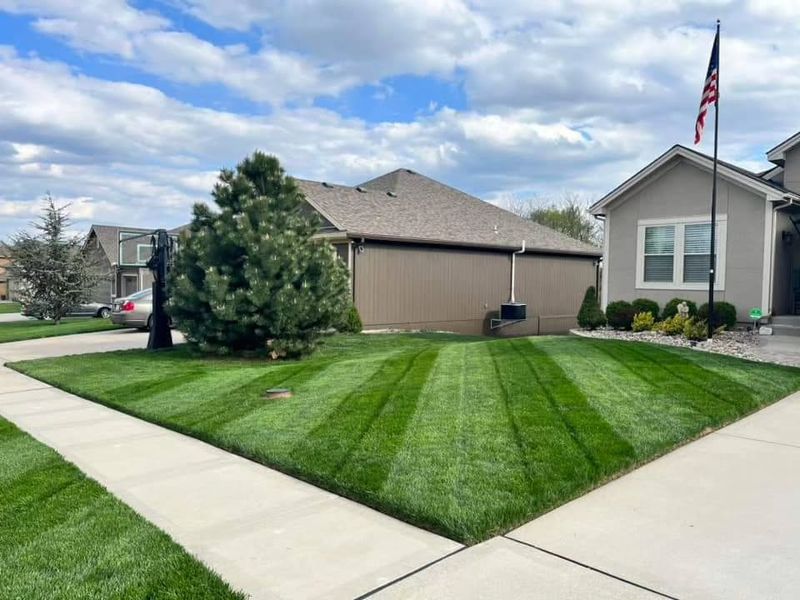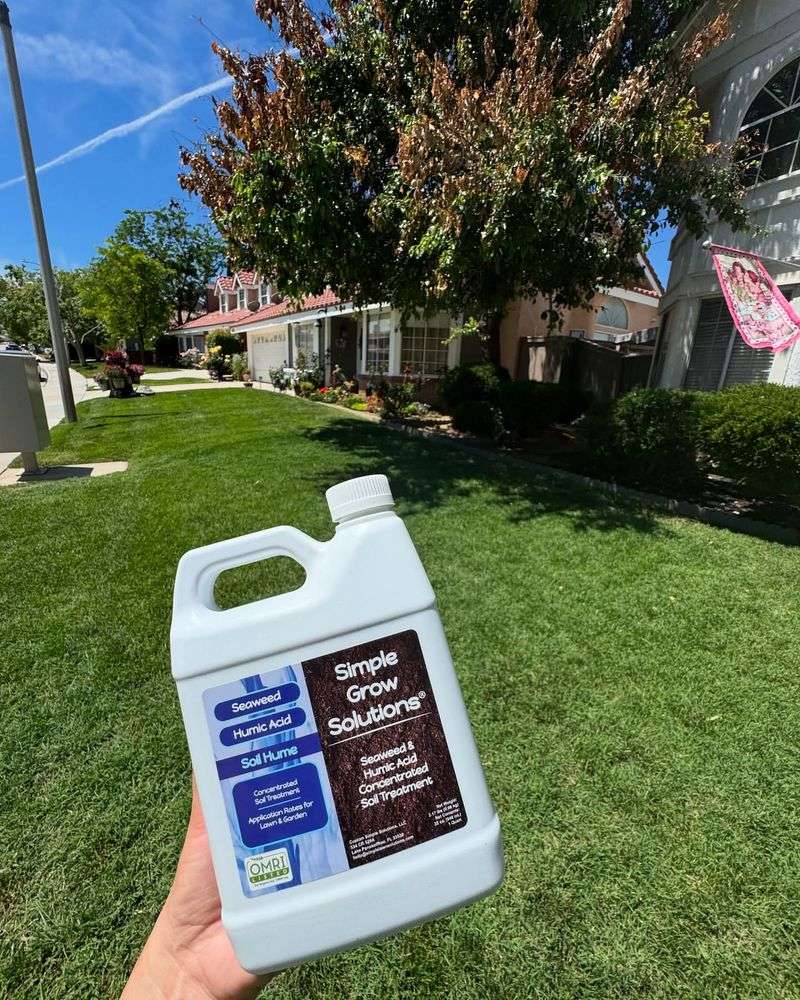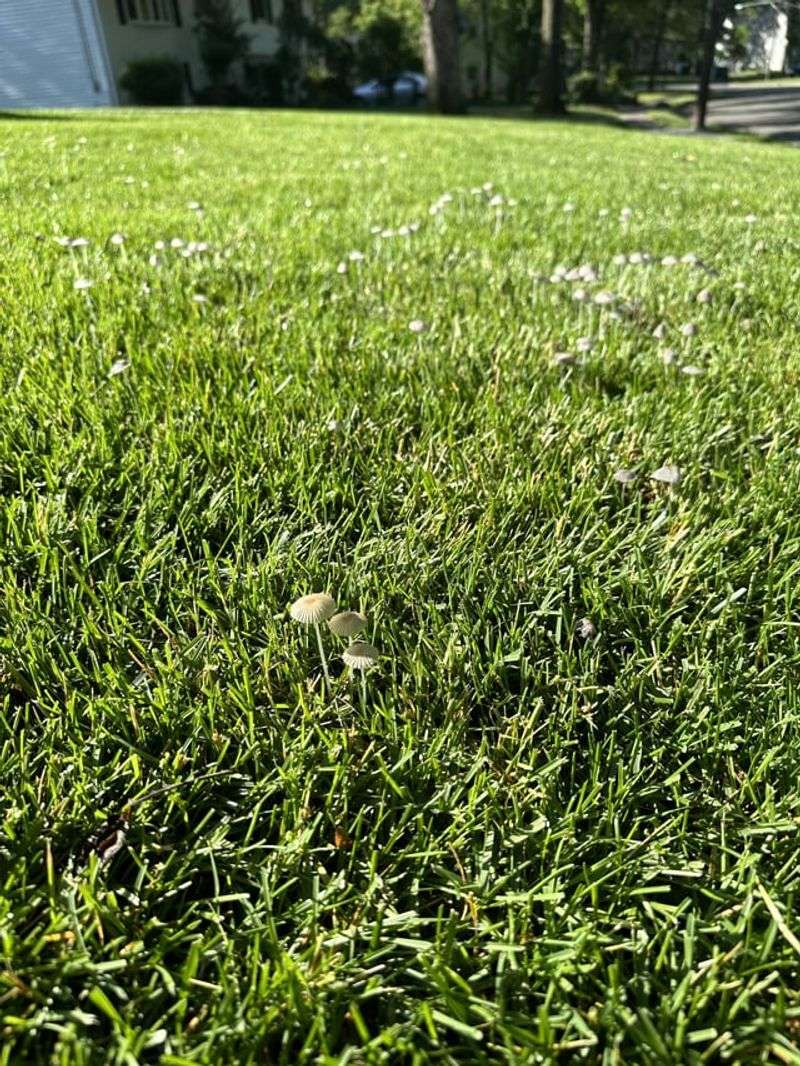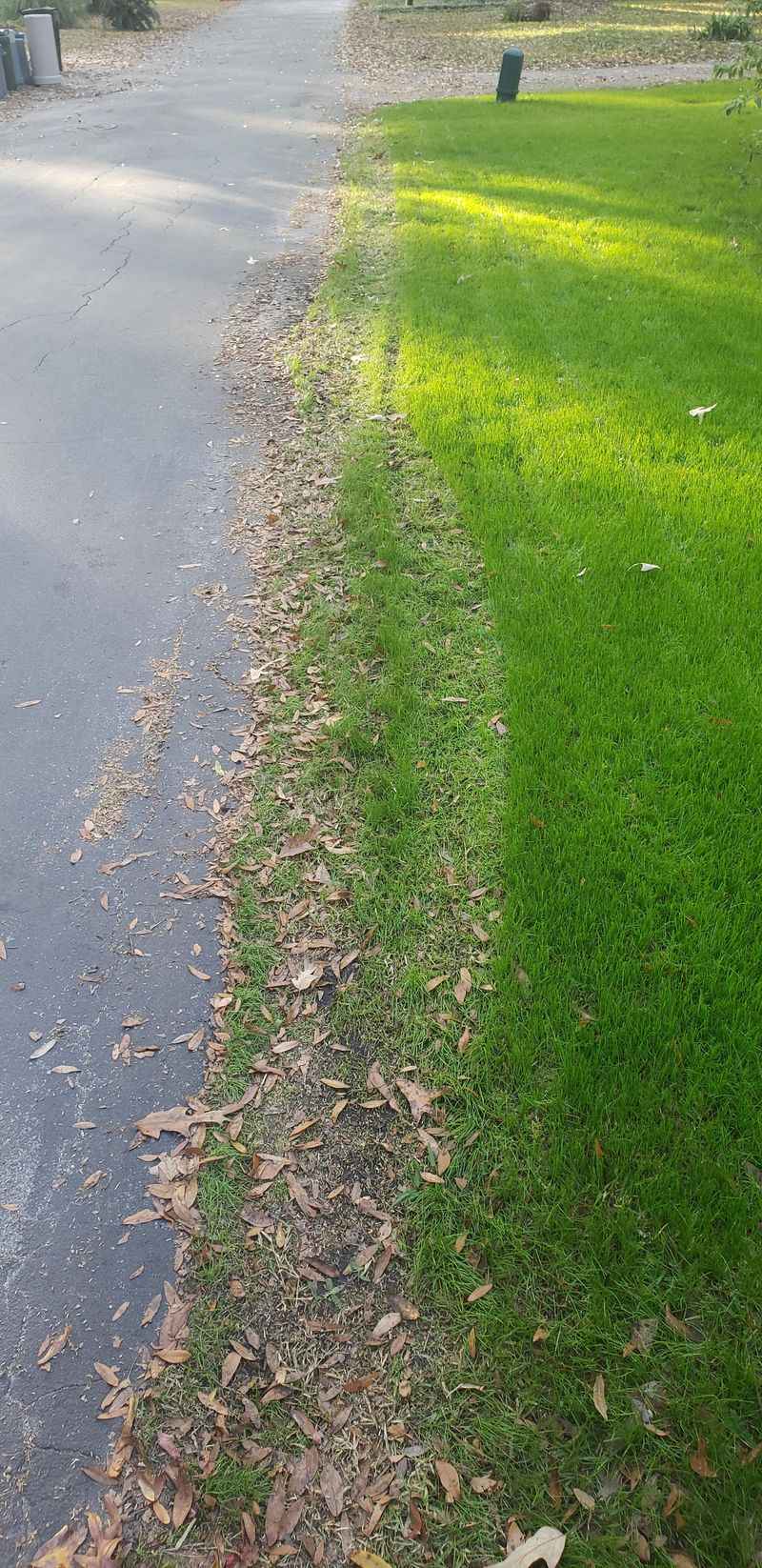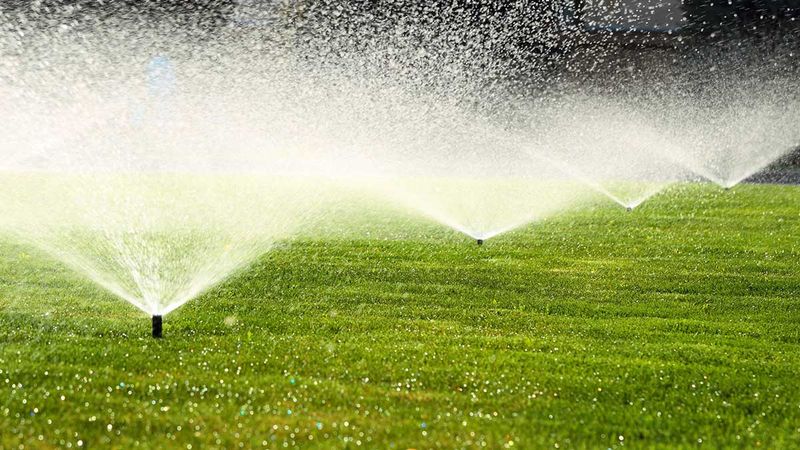Kansas summers are no joke—scorching heat, scarce rain, and nonstop sun can turn lush grass into a brittle, brown mess. It’s easy to feel defeated when your yard looks more desert than lawn. But your turf’s not beyond saving.
With smart hydration, deep watering early in the morning, and slow-release fertilizers, you can help grass bounce back. Shade-friendly strategies and mowing adjustments go a long way too.
Prepping now sets the stage for fall recovery. Aerate to let roots breathe, overseed patchy spots, and feed your lawn so it hits cooler months ready to repair. The green will return—and so will your pride in it.
1. Early Morning Watering
The crack of dawn is your lawn’s best friend during Kansas heat waves. Watering between 5-7 AM allows moisture to soak into the soil before the sun starts its daily baking routine.
I’ve saved countless patches in my Overland Park yard by switching to pre-sunrise watering sessions. The neighbors thought I was crazy until they saw the results!
Water droplets act like tiny magnifying glasses in midday sun, potentially burning grass blades. Morning watering eliminates this risk while reducing evaporation by nearly 30% compared to afternoon watering.
2. Deep Root Soaking
Forget frequent shallow watering—it only trains roots to stay near the surface where they’re vulnerable to heat. Instead, give your lawn a good, deep soak 1-2 times weekly, applying about 1-1.5 inches each time.
My Wichita lawn survived last August’s 105-degree week thanks to this method. Setting out empty tuna cans helps measure when you’ve hit the right amount of water.
Deeper watering encourages grass roots to grow downward, accessing cooler, moister soil layers that remain insulated from surface heat. Your grass becomes naturally more drought-resistant over time.
3. Raise Mowing Height
Taller grass provides natural shade for soil and roots. Immediately raise your mower setting to 3-4 inches for cool-season grasses or 2-3 inches for warm-season varieties common in Kansas.
After two weeks of higher cutting, the temperature difference at soil level can be up to 15 degrees cooler! This simple adjustment saved my backyard when temperatures hovered around 100° for days.
Longer grass blades also mean more photosynthesis, giving your lawn extra energy to recover from heat stress. Just be careful not to remove more than one-third of the blade height in a single mowing.
4. Dormant Grass Protection
Brown grass often isn’t dead—it’s just sleeping! Kansas lawns naturally go dormant to protect themselves during extreme heat. Light watering (about ¼ inch) every 2-3 weeks keeps root systems alive without breaking dormancy.
Walking across dormant grass can cause permanent damage. I learned this the hard way after creating a permanent path through my Lawrence yard during last summer’s drought.
Resist the urge to fertilize dormant grass—it won’t help and might actually stress the lawn further. Patience is key; your lawn will green up again when temperatures drop below 80°F consistently.
5. Core Aeration
Kansas clay soils become rock-hard during heat waves, preventing water from reaching thirsty roots. Core aeration punches small holes throughout your lawn, creating pathways for water, oxygen, and nutrients to penetrate.
After aerating my Topeka lawn last August, the next rainfall actually soaked in instead of running off into the street. The difference was immediately noticeable even during the hottest part of summer.
Late summer is actually ideal for aeration in Kansas—the holes help prepare your lawn for fall recovery while reducing compaction from summer activities. Rent a machine or hire a service; the investment is worth it.
6. Light Compost Topdressing
A thin layer of compost works wonders on heat-stressed Kansas lawns. Apply ¼-½ inch across damaged areas, gently raking it down to soil level without burying existing grass.
Compost adds beneficial microorganisms that help break down thatch while improving soil structure. The transformation in my garden’s edge areas, which always suffered worst during Hutchinson’s hot spells, was remarkable after just one application.
For best results, water lightly after application to activate the biological processes. Local municipal compost works great, but avoid fresh manure which can burn already stressed grass.
7. Weed Removal By Hand
Chemical weed killers can devastate heat-stressed grass. During late summer in Kansas, switch to hand-pulling weeds, focusing on larger specimens that compete with your grass for precious water.
The best time is right after rain when the soil is soft. I spend about 15 minutes each morning pulling crabgrass from my Salina lawn while enjoying coffee—it’s oddly satisfying watching the weed population gradually disappear.
Target weeds with taproots like dandelions by removing the entire root. For spreading weeds like clover, consistent removal eventually depletes their energy reserves, giving your grass the advantage it needs.
8. Mulch Grass Clippings
Free fertilizer is falling from your mower! Grass clippings contain valuable nitrogen and moisture that can help your lawn recover from Kansas heat stress. Simply remove the collection bag and let short clippings fall back onto the lawn.
The key is frequency—mow often enough that clippings are no more than an inch long. After switching to this approach in my Manhattan yard, I noticed significantly better drought resistance during August heat waves.
Clippings decompose quickly, returning about 25% of your lawn’s fertilizer needs naturally. They also shade the soil surface, reducing evaporation and cooling soil temperatures by several degrees.
9. Spot Seeding Bare Patches
Late summer offers a perfect window for repairing completely dead patches in Kansas lawns. Focus on areas larger than a dinner plate, preparing the soil by scratching the surface with a garden rake to create good seed contact.
For cool-season grasses like tall fescue (ideal for eastern Kansas), seed now for establishment before winter. I’ve had great success repairing bare spots in my Olathe yard during the last weeks of August.
Cover newly seeded areas with a thin layer of straw or seed-starting mulch to retain moisture. Water these spots twice daily with a gentle spray until new grass reaches mowing height.
10. Hydretain Application
This moisture-management product acts like tiny water magnets in your soil. Hydretain captures water vapor that would normally be lost and converts it back to usable liquid for grass roots.
After applying it to my drought-prone front yard in Dodge City, I noticed I could stretch watering to every 4-5 days instead of every 2-3, even during the worst August heat. The difference was especially noticeable in areas that typically dried out first.
One application lasts about three months in Kansas conditions. While not cheap, the water savings and lawn preservation can be worth the investment, especially for persistent problem areas.
11. Temporary Shade Structures
Sometimes extreme measures are needed for extreme heat. For valuable but struggling lawn areas, consider temporary shade cloth structures that reduce solar intensity by 30-50% while still allowing some light through.
My south-facing lawn strip in Emporia was always the first casualty of summer heat until I installed shade cloth on simple PVC frames. The difference in soil temperature was immediate—nearly 20 degrees cooler under the cloth!
Garden centers sell shade cloth by the foot, or use old bed sheets in a pinch. Remove shade structures once temperatures moderate to prevent weakening grass through excessive shade.
12. Kelp Extract Spray
Seaweed-based products contain natural growth hormones and stress-fighting compounds that help grass recover from heat damage. Liquid kelp extract, applied as a foliar spray during evening hours, gives your lawn a remarkable boost.
The results aren’t immediately visible like with fertilizer, but the resilience it builds is real. My test strips in Garden City showed significantly better recovery after a brutal heat wave compared to untreated sections.
Apply every 2-3 weeks during stress periods using a hose-end sprayer. The trace minerals and natural cytokinins in kelp help stimulate root growth exactly when your Kansas lawn needs it most.
13. Light Potassium Feeding
While nitrogen can burn stressed lawns, potassium strengthens grass against heat and drought. Look for a summer lawn product with a low first number and higher last number (like 3-0-8) in the NPK ratio.
After applying a potassium-focused treatment to half my Newton yard as a test, that section maintained color two weeks longer during our August dry spell than the untreated half. The difference was clear even from across the street.
Apply at half the recommended rate to avoid stressing the lawn further. Water thoroughly afterward to move the nutrients into the root zone where they’ll do the most good during Kansas heat waves.
14. Humic Acid Amendment
Derived from ancient plant matter, humic acid improves nutrient availability and water retention in Kansas’ challenging soils. It’s available as a liquid spray or granular application that can be applied even during summer heat.
The sandy sections of my Hays backyard always struggled until I started regular humic acid treatments. Now they stay green at least two weeks longer during drought periods, and recover faster afterward.
Humic acid works beneath the surface, improving soil structure rather than forcing top growth. This makes it safe for summer application when you want to avoid pushing vulnerable new growth during the hottest weather.
15. Mycorrhizal Fungi Introduction
These beneficial fungi form partnerships with grass roots, essentially extending their reach and water-gathering ability. Commercially available mycorrhizal products can be watered into heat-stressed Kansas lawns to improve drought resilience.
The fungi create a network that connects grass plants, allowing them to share resources during stress periods. After treating my Derby lawn last summer, recovery from heat stress was noticeably faster compared to previous years.
Apply when soil temperatures are below 85°F for best results—early morning application followed by irrigation helps protect the beneficial organisms. One treatment can establish colonies that benefit your lawn for years.
16. Traffic Reduction Strategies
Every footstep on heat-stressed grass causes damage that takes extra energy to repair. Create temporary pathways using stepping stones, mulch, or even plywood boards to redirect traffic away from struggling lawn areas.
We rerouted our family’s backyard paths in Leavenworth using simple cedar rounds as stepping stones. The grass alongside these new pathways recovered dramatically while untouched areas continued to deteriorate under foot traffic.
Consider temporarily closing off severely damaged sections with decorative fencing or potted plants. Even a few weeks of reduced traffic during peak heat can make the difference between recovery and permanent damage.
17. Overnight Lawn Soaking
For severely stressed areas, an occasional overnight deep soak can be lawn-saving first aid. Set up sprinklers to run from 10 PM until 2 AM, applying water slowly enough to prevent runoff but thoroughly enough to penetrate 6-8 inches deep.
This method saved my Junction City backyard during last year’s record heat wave. The nighttime application eliminates evaporation waste while giving roots maximum time to absorb moisture before the next day’s heat arrives.
Limit this treatment to once every two weeks to prevent disease issues from consistent nighttime moisture. Check local water restrictions first—many Kansas communities offer exemptions for overnight watering due to its efficiency.

